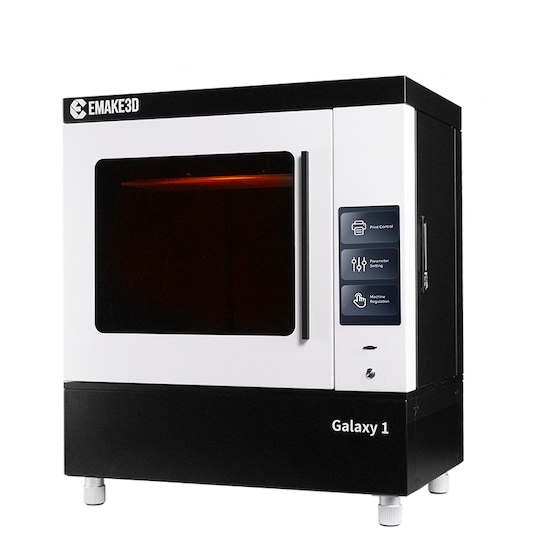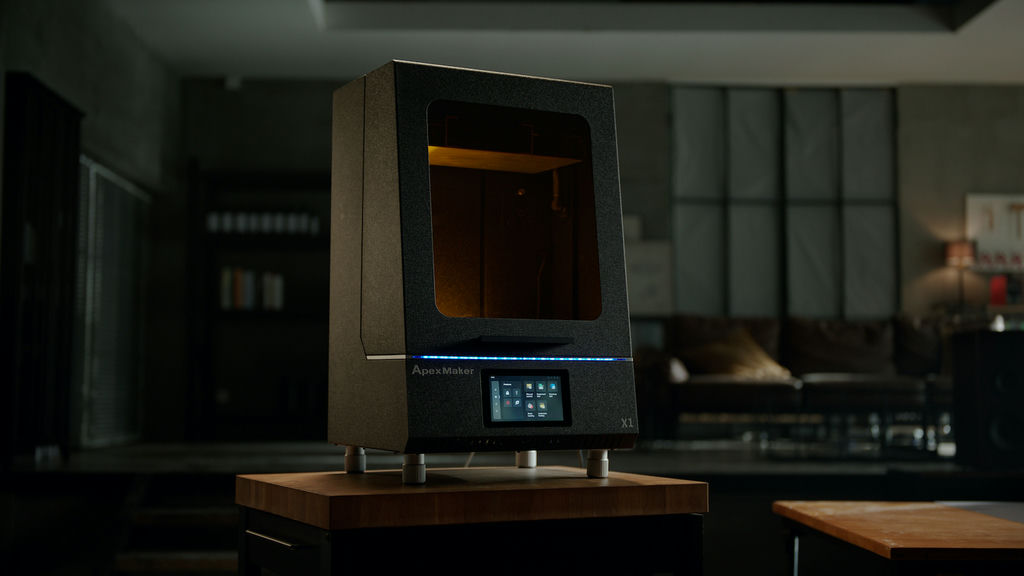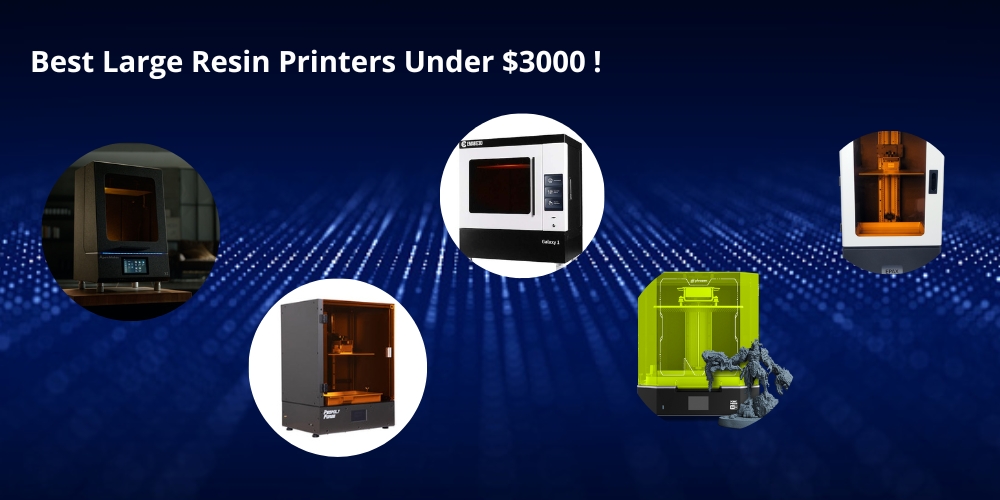Resin 3D Printers have become more cost effective over the last few years, largely due to the popularity of mSLA technology, which has been spurred by the increase in LCD resolution and decrease in LCD screen prices.
For this reason, it is very easy to find a small mSLA printer for under $200. There are a fair few medium-sized resin printers available at affordable price points, but until recently, if you wanted to print resin objects measuring over 300 mm in the X or Y direction, then your options were limited to more costly systems.
2023 has been a blessing for those wishing to print with larger resin machines, and those wanting to invest in larger SLA / mSLA systems no longer have to break the bank in order to do so.
In this article, we will look at a range of large resin 3D Printers that you can buy for less than $3000 USD.
Print Large
There is no official definition of what makes resin 3D printers “large”, but for this guide, we will count any with the x-axis being over 280mm and the z-axis height as being over 300mm as being a “large” resin printer. With that definition clarified, here is our list of large resin printers that you can buy for under $3000 in 2023.
Peopoly Forge
Peopoly has a variety of mSLA printers that would all qualify as “large”, ranging from the smallest Peopoly Forge (288 x 163 x 350mm build volume) up to the massive Peopoly XXL v2 (527 × 296 x 550 mm build volume).
The XXL v2 retails for $8,299, so while offering substantial print volume, it is too expensive to qualify for our sub-$3000 large resin printer list.
The Peopoly Forge, on the other hand, costs just $979, and for that you get a high contrast 6K monochrome panel, WiFi and Infrared Camera for remote monitoring and management, and a temperature-controlled vat for more consistent printing.
In terms of print volume and cost, the Peopoly Forge offers the best size for the lowest price.

Phrozen Mega 8K / Mega 8KS
The Phrozen Mega 8K is a popular machine among resin enthusiasts, due to its attractive design, 8K resolution and print volume. Capable of printing object up to 330 mm x 185 mm x 400 mm, the Mega 8K has earned a following due to its calibration-free plug and play capabilities and sturdy build quality. The original Mega 8K retails for $2,199.
The company has also just released a version called the Mega 8KS, which keeps the same sized build area, but reduces the z-axis build height to 300 mm, for those who wish to maintain the same print area as the original Mega 8K, but spend a little less. The company also offers their own range of resins for a variety of needs, and you can also use most 405nm resins on their printers.
The Mega 8KS retails for $1,499. You can find more information about the Phrozen Mega series printers here.

Emake3D Galaxy 1
The Emake3D Galaxy 1 is a newcomer on the list, and is the only one we are looking at that is a genuine SLA machine – it uses lasers rather than an LCD to cure the resin.
With a substantial build volume of 400 x 200 x 400mm, it is also the largest on the list.The Emake3D Galaxy 1 features 100um printing accuracy and 25 micron XY resolution at a print speed of 50mm/hour. This is all enabled by the 230mW laser, capable of printing 405nm resins
According to the Kickstarter page, the Galaxy 1 has 20,000+ hours lifespan, meaning that it will last 4x as long as most mSLA printers before needing its optics replacing.
What makes the Galaxy 1 appealing, asides from its large build volume, is its price. You can purchase this printer for $2,900, which is very good value for money, especially when compared to other smaller laser-based SLA printers such as the Formlabs L, which is around 3x more expensive than the Galaxy 1 (and has a smaller print volume).
If you are looking to invest in a low cost laser SLA machine, then the Emake3D Galaxy 1 seems to be the best opton in terms of price and size. To find out more information, visit the Emake 3D website.

Apex-Maker X1
The X1 from Apex-Maker is the second 8K large resin printer on our list, and features a 16″ 8K Industrial LCD screen and 353 x 198 x 400mm build volume, making it larger than the Phrozen Mega 8K.
But the X1 contains a lot more features than the Mega 8K, and retails for a lower price also, so Phrozen might expect some stiff competition with this machine.
For example, the $1,999 Apex-Maker X1 is capable of printing at a speed of 180mm/hour with 46µm resolution, has HD camera monitoring, auto resin fill and drain, and a vat heater, to ensure that your resins stay within the optimal temperature range, even if you’re running the air conditioning.
The Apex-Maker is our one-to-watch in terms of mSLA systems of 2023.
For further details on the Apex-Maker X1, please visit this link.

EPAX X133
The EPAX X133, (from American company Epax 3D), comes with a 13.3-inch 7K mono LCD screen and a large build volume measuring 292 x 165 x 400mm.

The light source is a lensed parallel light array for even light distribution, providing great dimensional accuracy by focusing the UV light for curing the resin. Epax markets this printer as a robust business class printer. Weighing in a 52kg, be sure to have someone assist when setting this printer up on premises.
EPAX also has their own brand of resins which includes EPAX Hard, and EPAX Hard & Tough, but they say that their printers are companible with a variety of third party 405nm resins also.
The EPAX X133 mono retails for $2,899. Click here to find out more.
Conclusion
As you can see, it is a great time to be investing in a larger prosumer-grade resin 3D Printers if you’re on a budget, as there are now a variety of options for both mSLA and SLA fans.
Our own recommendation if you are looking for the largest mSLA machine for the smallest amount of money is to take a look at the Apex-Maker X1, with its 8K screen and 353 x 198 x 400mm build volume.
If you are an SLA purist, and would like a large laser machine which not only offers long-life optics, but an unbeatable build volume of 400 x 200 x 400mm, then we recommend taking a look at the Emake3D Galaxy 1.
Naturally, both the Apex-Maker X1 and the Emake3D Galaxy 1 are both new kids on the block, so we would recommend watching review videos of either machines, and seeing what the general consensus is among makers before taking the plunge.
Because while size and cost are important factors, reliability is crucial, and this can only really be determined by running a printer for extended periods of time, or listening to the advice of other makers who have.
Subscribe to AM Chronicle Newsletter to stay connected: https://bit.ly/3fBZ1mP
Follow us on LinkedIn: https://bit.ly/3IjhrFq
Visit for more interesting content on additive manufacturing: https://amchronicle.com


